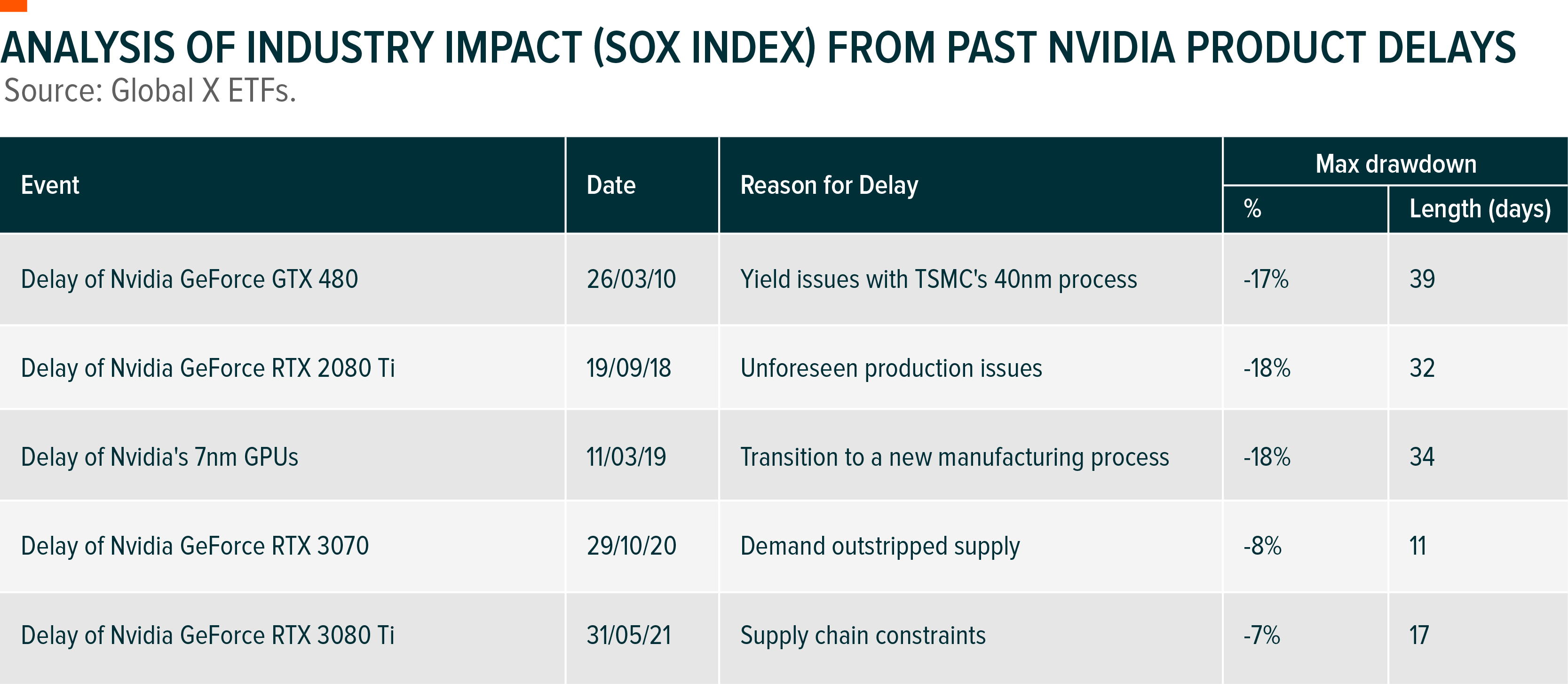Understanding the recent sell-off amid Nvidia product delay speculations
The semiconductor sector has been experiencing significant volatility, with a notable sell-off last week affecting semiconductor-heavy indices across Asia. Markets such as Kospi, Nikkei, and Taiwan, all significant players in the tech and semiconductor space, saw declines, highlighting the sector’s sensitivity to disruptions. This volatility is not confined to Asia alone; it is also impacting global markets, reflecting the interconnected nature of the semiconductor industry and its critical role in the global economy.(1)
Recessionary fears and speculations of delay
The recent market weakness can be attributed to a mix of broader recessionary fears and more specific concerns within the tech sector. Reports from sources such as The Information suggested a potential delay in Nvidia’s (NASDAQ: NVDA) next-generation GPU architecture, codenamed Blackwell, originally slated for release in H2 2024, now possibly pushed to H1 or even Q2 2025. This news has generated significant speculation and concern among investors, further fuelled by the impact on Nvidia’s supply chain and its extensive reach across the semiconductor industry.(2)
The promise and implications of Blackwell
Blackwell, Nvidia’s next-generation GPU architecture, is anticipated to revolutionise both consumer and data centre applications with enhanced performance and efficiency. Utilising Nvidia’s B100 and GB200 chips, primarily produced by TSMC, Blackwell represents a significant advancement in Nvidia’s product lineup. A delay in its release could send ripples through the semiconductor supply chain, affecting not only TSMC but also a wide array of semiconductor equipment manufacturers. The intricate nature of the supply chain makes it particularly vulnerable to such disruptions, potentially impacting production schedules and market dynamics.(3)

Managing market sensitivity
While reports on the delay remain unconfirmed, historical data shows that speculation of this nature can significantly affect market indices for a short period. Past events, such as Nvidia product delays, have led to notable movements in the SOX Index, with maximum drawdowns ranging from 7% to 17% over periods of 17 to 39 days. Given Nvidia’s increased prominence in the supply chain, the potential impact of any delays could now be more pronounced.(4)

Market reactions and future outlook
As the situation unfolds, investors should prepare for potential volatility. Nvidia and other key players in the semiconductor industry could provide updates or clarifications in the coming days. We may also see changes in analyst estimates, which could impact volatility and share prices along the supply chain. Staying informed and understanding the broader implications of these developments will be crucial for navigating the market in the short term.(5)
Conclusion
The recent semiconductor sector sell-off underscores the delicate balance within the industry and the significant impact that key players like Nvidia have on the market. Despite the interconnected challenges, the semiconductor sector still holds potential with expanding node adoption, technological advancements such as high-bandwidth memory (HBM), and significant sovereign investment. As the situation evolves, maintaining a close watch on official communications and market reactions will be essential for investors looking to manage their portfolios effectively.

2 stocks mentioned
1 fund mentioned

